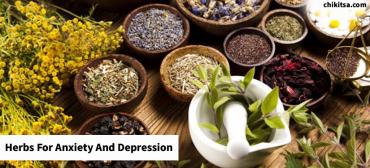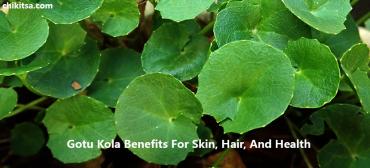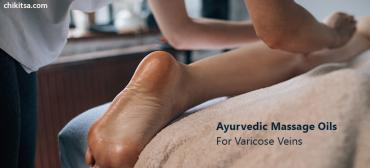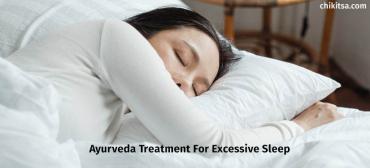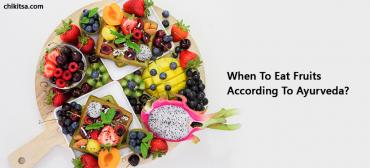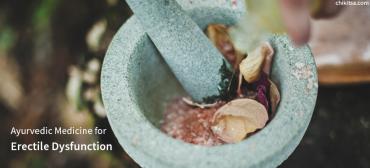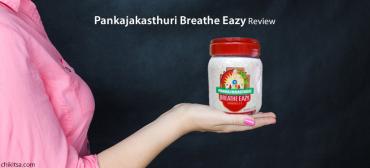Anatomy or Shareer Rachana in Ayurveda

Our corporeal body is titledas Kaya, Shareer and Deha in Ayurveda.
It needs a special mention here that around twenty centuries B.C., the knowledge of anabolic and catabolic activities and their role in balancing health had come to the notice of ancient Indian physicians. It is clear from the fact that, in different contexts, the physical body referred to in different terms such as Kaya, Shareer or Deha.
The etymological origin and its translation of the word Kaya means Chi / Chayane - Accumulating or multiplying continuously. It suggests anabolic activity of the body.
The etymological origin and its translation of the wordShareer meansShru / Himsane - getting destroyed or shedding out continuously. It suggests catabolic activity of the body.
The etymological origin and its translation of the wordDeha meansDhi / Vardhane - growing or developing continuously (A sign of life). It suggests Harmony in Anabolism and Catabolism activity of the body.
Our body is said to be made up of six parts “Shadanga†(Shad = Six, anga = parts). They are: Head, extremities and the middle part consisting of chest and abdomen. While the head is the controller of all our activities and thinking, the middle part plays an important role in performing vital functions such as respiration, digestion, metabolism and excretion, the extremities are meant to perform physical activities and take part in locomotion.The smaller parts of our body are referred to as Pratyangas.
Meaning Of Ayurveda
Etymologically, the word Ayurveda is made up of two basic terms viz., 'Ayu' and 'Veda' wherein 'Ayu' stands for life and 'Veda' means science or knowledge: thus Ayurveda means `the science of life’.
To elaborate further, `Ayu’ not only means an alive body system but it is an active assembly of corporeal body (Shareer), Sensomotor organs (Indriyas), Mind (Mana) and Soul (Aatma). Ayu or the life is supposed to originate right at the time of fertilization of ovum (Shonit) by the sperm (Shukra) during which time soul (Aatma) gets attached to it. The life ends when this omnipotent Aatma departs from it. The life span of an average human being is said to be of around hundred years which depends on many extrinsic and intrinsic factors governing health (Swasthya).
Ayurveda looks not only into the physical aspect of life but it also goes deep into its humane aspect also. That is why, while defining the life (Ayu), AcharyaCharak, mentions that the science, in which the parameters which are beneficial (Hita), harmful (Ahita), pleasurable (Sukh), or unpleasurable (Dukha) for life are described, is 'Ayurveda'.
The life therefore is a fleeting, mortal congregation of physical body, mind and soul, i.e. the physical as well as metaphysical components. The fusion of physically indistinct non-material components such as mind (Mana) and soul (Aatma), initiates the process of living.
It is postulated that as long as the components of soul and mind (Jeevatma) are intact, the biological forms of the material elements present in our body keep on functioning actively and keep us alive; but no sooner the Jeevatma departs, the biological materials start disintegrating. This state is known as Mrityu (death). The life is re-defined as the fusion of physical body, senso-motor organs, mind and soul.
The physical part of body is a combination of biological components such as Doshas (Omnipresent vital catalysts), Dhatus (Tissues / humoral components); Agnis (Chemicals / Bio-transformers) and Malas (Waste components); whereas the metaphysical part consists of mind, soul and subtle elemental factors (Tanmatras) which are naturally implanted in the sensory organs so as to provide us the faculties of hearing, touch, vision, taste and smell. When all the above factors act in harmony, it is defined as Swasthya (health). Contrariwise, a state of disharmony / chaos is known as Roga (disease).
Ayurveda says that the forces we see predominating the external world predominate our internal milieu also. The living body is nothing but a mini universe in itself. According to the established theories mentioned in philosophies the whole material world is made up of five basic elements. viz. Aakash, Vayu, Teja, Apa and Prithvi, comparable with ethereal, gaseous, energy, fluid and earthern masses respectively which are material in nature and also, Aatma (Soul), Mana (Mind), Kala (Time) and Disha (Space) which are non-material. While different permutations and combinations of these elements without any life-force lead to the formation of inanimate materials / minerals or metals, their congregation, coupled with the life-force give birth to the animate world, which could be of higher level.Animal Kingdom known as Bahirantashchetana. This is a lower level. Plant Kingdom is known as Antashchetana.
The biological components mentioned above, viz., Doshas (vital catalysts), Dhatus (tissue / humoral components), Agnis (biochemical transformers) and Malas (waste materials) are nothing but the biological forms of the five basic elements only.
During embryological development and further on, the Doshas and Dhatus get amalgamated in genetically coded proportions and form / constitute various physical organs such as heart, liver, stomach, etc.
The science of Ayurveda has also elaborated on certain special Sanskrit terms for different structures in the body. These terms are self explanatory in themselves. A brief review of the important ones is mentioned here under:
- Doshas (Vital Catalysts)
- Dhatus (Tissue Components)
The Doshas (vital catalysts) are the most important constituents as they catalyse and/or carry out all vital functions in their normalcy, and initiate the disease process in states of disequilibrium / vitiation.
Dhatus are the tissue-humoral systems of the body. They are always formed in a fixed sequence. In different permutations and combinations the Dhatusform various physical organs of the body according to the genetically coded informations. They are seven in number. Their comparison with modern terminology may be as follows: Rasa( Plasma and Lymph); Rakta (Blood cells); Mamsa (Muscle tissue); Meda (Adipose tissue); Asthi(Bone tissue); Majja (Marrow tissue); Shukra (Tissue and humoral components related to reproductive / anabolic functions)
PRATYANGA (Smaller Parts)
These parts of body are located in the larger Angas (parts). This list includes brain and all parts of cranium, stomach, back, umbilicus, nose, chin, bladder, neck, ears, eyes, eye-brow, temporal bone, axilla, breasts, testis, knees and fingers. Pratyangaalso includes Kalas (various membranes), and internal parts like liver, spleen, lung, caecum, heart, bones, joints, Siras and Dhamanis. Strotosas are also included in thesePratyangas.
AASHAYAS (PouchyStructures)
According to AcharyaSushrut((
Author of SushrutSamhita - The magnum opus on the principle and practice of surgery with ENT and Ophthalmology written in 1000 B.C.) there are eight Aashayas (pouchy structures) in our body. These Aashayas are hollow pouches, meant for storage of specific material and have a surrounding outer covering. They are named as Vatashaya, Pittashaya, Shleshmashaya, Raktashaya, Aamashaya, Pakvashaya, Mutrashaya and in female the eighth AashayaisGarbhashaya.
- Vatashaya may be compared to colon.
- Pittashayamay be compared to gall-bladder, which stores bile.
- Shleshmashaya may be compared to lungs.
- Raktashayamay be compared to organs like liver, spleen and heart.
- Aamashaya is compared to stomach.
- In Pakvashaya, organs like large and small intestine are included.
- Mutrashayais compared toUrinary bladder.
- Garbhashayais compared to Uterus.
PRANADHISHTHANAS (Vital Organs)
These are the vital spots of the body where Prana (Life) resides. They are ten in number. They include Shankhapradesh( tempora), three Marmas i.e. Hrudaya (heart), Shira (head) and Basti (bladder); Kantha (neck), Rakta (blood), Shukra (viatl fluid), Oja and Guda (anus and rectum). It is believed that injury to any of these organs or loss of blood and vital fluid leads to instant death.
UPADHATUS(Secondary Products)
These are noted to be formed by seven Dhatus, mentioned earlier. They are formed as follows -
- Stanya (milk) and Aartav (menstrual blood flow) are formed by RasaDhatu
- Kandara (tendons) and Sira (blood vessels) are formed by RaktaDhatu
- Vasa (fat) and Twak (skin) are formed by MamsaDhatu
- Snayu (Ligaments) and Sandhi (joints) are formed by MedaDhatu
- Danta (teeth) are formed by AsthiDhatu
- Kesha (Hair) are formed by MajjaDhatu
- Oja is formed by ShukraDhatu.
TWACHA (Skin and Underlying Facia)
Twacha is Upadhatu of MamsaDhatu, whichis formed during fertilization process itself. Itis made up of seven layers. They are: 1) Avabhasini; 2) Lohita; 3) Shweta; 4) Tamra; 5) Vedini; 6) Rohini 7) Mamsadhara
PESHIS (Muscular Structures)
The Muscular structures of body carry veins, arteries and nerves in them. There are five hundred Peshis in our body, out of which four hundred Peshis are in upper and lower extremities, sixty six Peshis are in middle part of the body and thirty four Peshis are in head and neck.
It would be very difficult for us to compare the number and types of muscle tissues mentioned in Ayurveda with that of the description we get today in the books of modern anatomy.
KANDARA (Tendons)
These are tendons of the body, which are responsible for movements like extension, contraction etc. They are sixteen in number out of which eight are in extremities, four in the neck and remaining four in the back. The tendons of extremities cover the region of thighs and shoulders and get extended till the roots of the toes and fingers. The tendons of neck cover the chest and reach upto the head on one side and to the joints on the other side. The tendons of back extend to the ball joints of the shoulders above and the buttocks below.
SNAYU (Ligaments)
These may be compared with ligament and bursae, which connect the joints and muscles together. These Snayus are of four types Sushir (porous), Pruthal (broad), Pratanvarti (stretched) andVrutta (circular). Aamashaya, Pakvashaya have SushirSnayus. Chest, back and brain have PruthalSnayus. Legs and hands have Pratanvarti and VruttaSnayus.
There are nine hundred Snayus in our body, out of which six hundred are situated in the extremities, two hundred and thirty three in the trunk region and seventy in the neck region.
DHAMANI (Arteries)
There are different opinions about Siras and Dhamanis. It is considered that origin of both Sirasand Dhamanis is from Umbilicus. There are twenty four Dhamanis in the human body. According to Sushrut, Dhamanis are different from Siras by virtue of continuous pulsatory movement (Sanskrit : DhmanathDhamani ). Some Dhamanismay also be compared with cerebro-Spinal nerves. According to another opinion, Dhamanis carry Rasa (lymph) and blood within it.
SIRA (Veins)
Sirasare those vessels which tend to take Doshas (impurities) along with them. The movement of Doshas in them is like a smooth flow (Sanskrit :SaranathSira). There are seven hundred Siras in the body and whichcan be comparedtoblood vessels or lymph vessels.
SROTAS (Channels)
Channels of circulation or tracts within the body are called Srotas. They are named so because of their tendency of trickling or oozing (Sru : `to flow') of secretions through them. They are the pathways (Ayana) for the nutrient products; waste-products and Doshas during the process of metabolism. Srotas enable their products to reach their destination (viz. assimilation of nutrient substances by different parts of the body, or elimination of waste products from the body). They transport the Dhatuswhich are undergoing transformation. They are physical structures (murti-mantah), and specific in their functions. While the basic sites of Srotas with different functions are fixed depending on the biological material they are carrying, their openings are innumerable. The Srotas can be compared with the unicellular end structures like capillaries or alveoli of lungs.
The vitiation of any of these Srotas (channels) is caused by exaggeration or inhibition of normal functions; occurrence of tumours in different sites and the shifting of the effected components to different areas of operation, manifested in the form of metabolic disorders.
MARMAS (Vital Sites)
Marmas are described as vital points or spots in the body, which are sensitive and vulnerable. They are defined as anatomical landmarks where flesh, veins, arteries, ligaments, joints and muscles unite and therefore life abides there. They are also described as mortal spots: since any injury to these spots may lead to temporary or permanent deformity of that particular organ or death.
Such Marmas are one hundred and seven in number. They are located as under -
- MamsaMarma constitute eleven Marmas
- SiraMarma constitute forty one Marmas
- SnayuMarmaconstitute twenty seven Marmas
- AsthiMarma constitute eight Marmas
- SandhiMarma constitute twenty Marmas
Another important classification according to the morbidity and mortality involved has been mentioned as follows -
1) SadyopranaharaMarmas - When these spots are injured, they cause immediate death or death within a day or a week. They are nineteen in number.
2) KalaantarPranaharMarma - When these spots are injured, they cause death after some interval. They are thirty three in number. eg. Apalapa, Apastambha, Shipra.
3) VishallaghnyaMarma - When these spots are injured, they cause death as soon as the foreign body is extracted. They are three in number. eg. Sthapani, Utkshepa.
4) VaikalyakarMarma - When these spots are injured, they cause permanent loss of the limb, or deformity of the organ. Thus the injury would not be as fatal as that of the previous Marmas. They are forty four in number. eg. Vitapa, Kurcha, Neela.
5) RujakarMarma - When these spots are injured, they cause intense pain in the affected region. They are eight in number. eg. Gulfa, Manibandha.
Thus the knowledge of mortal spots in the human body is essential for the surgeon.
GARBHOTPATTI (Conception, Pregnancy and Labour)
According to Ayurveda, as well as ancient anthroposophies a man as well as a woman contributes equally in the process of continuation of the race. While the male counterpart is claimed to sow the seed, the female one is compared to act as the fertile land. However, for producing a healthy offspring, maturity of both the contributors is equally important. Furthermore, sexual congress of healthy partners at right and fertile time (known as Ritukal), in right moods and at a right place are also highly contributory. In spite of all the above being essential, it is believed that the destiny plays a significant role in conception for, the association of Jeevatma (soul component) at the time of the union of Shukra (sperm) and Shonita (ovum) instills the element of life (Jeevana)R whereby the process of cell multiplication, organ differentiation and physiological activities take a start.
The male contributes through semen; the qualities of 'moon' (Saumya) and the Agneya qualities are contributed by the female. However, all the primordial forms of matter viz. earthy components, water, fire, air and ether are also present in it and they are mutually beneficial, supporting and fusing.
Once soul enters into this matter of mass, it takes hold of this complex of primary forms. It further assumes a subtle shape, marked by the three aspects of Prakruti,and is led by the mind along with the contribution of ovum and sperm. It can be said that the living foetus represents the primary state of the three Doshas :Vata (the cosmic Vayu), Pitta (mother's ovum), and Kapha(the father's sperm).
After conception, the 'air' element is responsible in constituting the structure of the three Doshas and it forms the seven body constituents (Dhatu) together with the organs and links in due course. The 'fire' element is responsible for setting the stage for metabolic changes, where as the water element makes the foetus soft and humid. The 'earth' element is responsible for the peculiarities of the species; and the 'ether' element provides the space and scope to grow.
The mother is influenced by the presence and development of the foetus and some specific symptoms are seen in her body, mind and behavior. Some particular prescriptions concerned with the diet, behavior and psychology are mentioned in Ayurvedic texts for normal foetal development.
In the first month of gestation, the foetus is in the form of a gelatinous substance. Here all the material ingredients are mixed in an indistinguishable manner. This gelatinous shape is acquired the night after conception; then a 'bubble' is formed after seven nights ; after a fortnight it is converted into a 'Pinda' (tubular form) ; and it gets hard in a month's time. The foetus contains all the organs and limbs, all body constituents and individual characteristics, in an unmanifest form.
The gelatinous mass is transformed into an identifiable foetus, growing in size due to the fresh accretion of the five primary forms of matter. The sex of the foetus is represented by its form - female if elongated and male if spherical.
The foetus in the third month shows five small lumps (projections) representing the five major organs viz. two arms, two legs and head. It also shows many minute papillae to represent the rudimentary limbs. At this stage, the human form is clearly distinguishable. The heart is also formed during the third month and hence the foetus becomes aware of comfort and discomfort, and all the organs emerge simultaneously. At this stage foetus shows movements and intentions. But according to SushrutSamhita, the heart is formed clearly during the fourth month. Thus during the third and the fourth months, the mother is described as one entity, possessing two hearts and she manifests the longing of the foetus. These longings are said to reflect the experiences of previous lives of the child to be born. If these longings are not fulfilled, there is a possibility of the foetus becoming tense and defective.
The organs and limbs of the foetus become clearer and the consciousness is represented as intentions in the fourth month. The foetus becomes endowed with an explicit mind. Therefore this stage is described as the "waking up" from the state of consciousness. Asthangsangraha adds that the blood and muscles of the foetus are nourished more, compared to other components, during this month.
The appearance of intellect is considered to be seen in the sixth month. AsthangSangraha and the others state that hair on the head; body hair, nails, ligaments, strength, complexion etc. appear in this month.
All the organs and limbs are almost completely distinguished in the seventh month. Therefore if, due to any reason delivery takes place during this month, the baby will survive, provided proper care is extended. But, the individual may not be healthy owing to the premature delivery.
One important concept of Ayurveda is about 'Ojas' [Vitality]. In the eighth month the process of maturing of Oja is established in the heart. But the process involves periodical movement of vitality between the mother's body and the foetus. Therefore due to the instability of this factor, if the delivery takes place in this month, there is a risk either to the mother's life or to the baby's life.
It is usual for the delivery to take place in the ninth month; but it may be prolonged till the eleventh or twelfth month. Medical prescription or surgical intervention is proposed only if any morbidity appears before the passage of eleven lunar months, i.e. three hundred and fourteen days; after that it is said to be essential lest, the case turns into post maturity.
CONSTITUENTS AND QUALITIES OF BODY AND MIND
The various constituents and qualities of body and mind are derived from (1) Mother. (2) Father (3) Aatma-soul principle. (4) Satva. (5) Rasa-food or nutrition. (6) Satmya-getting habituated or adopted to the environmental factors.
1. Matruja -Maternal origin
Blood, muscular, adipose and nervous tissues and organs like skin, umbilicus, subcutaneous fat, lymphatics, heart, liver, spleen, kidney, bladder, the entire gastrointestinal tract and all the soft elements in the body.
2. Pitruja - Paternal origin
Hair on body and head, beard, nail, teeth, bones, blood vessels, nerves, semen, male reproductive organs and all stable elements in the body.
3. Atmaja - From the soul principle (lingadeha)
Birth in different species, life span, sensory and motor organs, mind, ego, intellect, memory, effect, happiness and sorrow, desires and aversions, impulses, consciousness, knowledge in general and knowledge about self, all the five types of Vata, specific shape, voice and colour.
4. Satvaja - From mind.
Enthusiasm, courage, cleanliness, sincerity, serious nature, violent nature, kindness, steadfastness, talkativeness, pride, fear, anger, jealousy, delusion, ignorance, laziness, character, devotion, sacrifice, religious values, memory and other qualities of mind.
5. Rasaja - From food or nutrition.
Nourishment, maintenance of life, growth, contentment, colour, energy, and strength.
6. Satmyaja - Habituated or adopted to environmental factors.
Love for work, health, happy state of sensory and motor organs, colour, voice, semen, absence of greed. These qualities can be cultivated.
APARA (Placenta)
This organ plays a very significant role in the nourishment and development of foetus. It has been said that amenorrhoea is seen in pregnant females, due to blockage of AartavavahaStrotasa by foetus. This menstrual blood, which ideally should be executed per vagina, goes up in the uterus and gets collected in a mass called as Apara, and also contributes to the development and growth of breasts.

